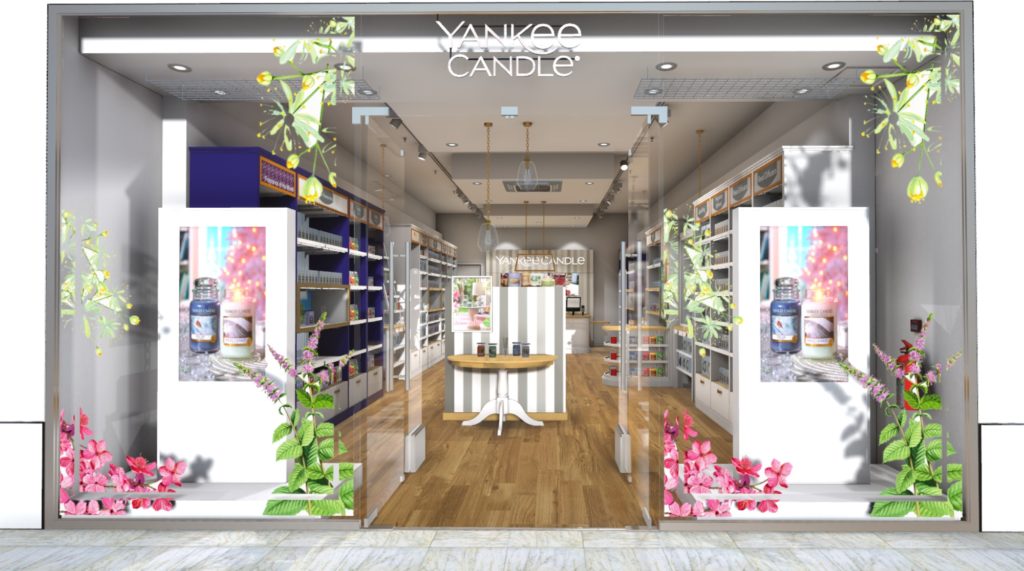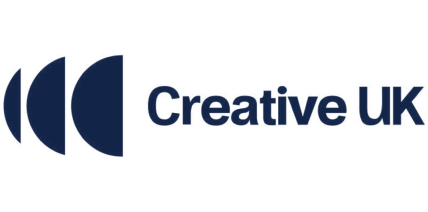Much is made of the future of this country as being a knowledge-based economy, but actually, the real prospects are to be found not just in developing technology (often swept away by overseas interests) but in creativity.
There’s empirical evidence. British designers are in demand worldwide, and UK creative companies are involved in prestigious, innovative work across the globe.
In a major report commissioned by WardWilliams Creative, we consider their approach to business, their specific qualities, their prospects, and give a view on how the UK can encourage creativity.
Leading up to publication of the report, we will be sharing the latest thought-provoking interviews with the businesses we are researching until the final report will be avaialble to download. These reports and interviews have been compiled by Larry Dillner of Decision Magazine.
Jed Wootten discusses the creative process
A common perception of the ‘creative’ process is that ideas just pop into mind unbidden and then magically spill out again in some useful form. But for Jed Wootten it’s far more logical and process driven. He says it’s about identifying and understanding a problem or requirement, then researching and analysing potential solutions.
Problems – Research – Solutions…
The founder of multidisciplinary product design consultancy Lumico Design explains: “First of all, you find out what’s required by the customer or the market. I don’t necessarily know what the solution will be but I need to know there’s a goal ; if you don’t understand the purpose of what you’re trying to do, you’re wasting your time. It’s like walking through a forest: you have all these trees, but which are the ones to stop and look at and which do you go around? Once you have discovered the fixed goalposts you can work through the variables, the materials, manufacturing, processes and timescales.”
There’s a “tricky balance” to be struck, he says, “between creative diversity of thought and a logical understanding of what technology can do when joined up with other pieces of technology.
By way of example, he says: “I had a call last week to ask if we could make a 3D-printed copy of a bolt for a joystick. The short answer was yes but the long answer was that you need to capture and clean the geometry up and then you need to know how to orient the parts and which materials will be most suitable; then we can print it. There is an enormous amount of technology involved and a creative company needs to be able to put that together.”
There’s a “tricky balance” to be struck, he says, “between creative diversity of thought and a logical understanding of what technology can do when joined up with other pieces of technology.”
It’s vital to be able to put oneself in the position of the end user,” says Wootten recalling a project that involved identifying how shoppers behaved. “A lot of young girls like shopping together but the changing rooms were too small so we suggested an expandable changing room. Girls also like to take selfies of themselves while shopping, but there was nowhere to put their phones so we suggested a holder on the wall to put their phones in. It is about having a process that allows different ways of thinking.”
Talking to the client to identify the problem and outline potential solutions is a vital part of this process, Wootten maintains. “It’s an educational and collaborative role which opens eyes to future possibilities yet unseen. The last thing you want is to present the design and then the customer not like it, so including them in the process is really important. It usually comes down to saying ‘this is the route but there are inherent risks so how do we mitigate them?’ This ensures we can deliver an approach that is engineered specifically to achieve the requirements of the customer.”
Wootten started out in retail design after doing his product design degree, and wound up going freelance after finding he didn’t like the culture at his then employer. “They were top-down and very grey, if you know what I mean.”
He later took an office and hired some design engineers and developers to cope with the workload and expanded the remit of what was now a business beyond pure product design and into manufacturing processes. The idea was to exploit exciting technologies like 3D printing, 3D scanning, virtual and augmented reality.
A key moment was moving to a science park. “That was wonderful,” recalls Wootten. “There were so many types of business there and we managed to gain some scientific customers and showed them how to do things they had not done before. That helped us build a reputation for cross-fertilisation. That was how we shifted to being a disruptive, innovation-based company based around new technology, offering solutions that customers had not even considered before.
“We wanted to educate customers in technologies that were potentially new and scary to them so they would have the confidence to say ‘we have thought about using 3D printing, can you help us’ ?”
3D Printing
Such as the company which wanted to know if there was a way of using 3D printing to make mannequins for shops. By integrating 3D printing with computer animation and 3D scanning, Lumico designed a product that went on to win an award for retail innovation.
Though some technologies (notably cameras) have become easier to use, Wootten says that’s not the case with everything. A lot of new technology is like old-school photography, where you had to know how to change the settings manually but now it is instant and automatic. 3D printing, for example, has not really captured the personal market, but it is finding a natural home in manufacturing and industry. Even aeroplane parts now are printed from 3D., but no-one has yet put old-school and cutting-edge technology together and made it simple to use.”
Virtual reality in particular has great potential, he says. ”It means customers can see the design and change it if they want to, and that will only take one day, instead of having a six-week sign-off for a 2D design and then the client not like it when they see it completed.”
The problem with new technology, of course, is that the marketplace can be slow to see its benefits. “This technology is almost too early for retailers,” says Wootten. “One fashion chain spent hundreds of thousands of pounds on designing and buying fixtures for a new shop. But the chief executive didn’t like the design when the products were delivered. They wasted all that money away, and that wouldn’t have happened had they designed it in VR.”
“The problem with new technology, of course, is that the marketplace can be slow to see its benefits.”
Big companies, he observes, really can be like oil tankers. “There are so many people in the chain of command that they can’t turn the ship, and ultimately that costs them. They can be shown something mind-blowing but it’s easier for them to stay with what they know, even if it costs them more. That seems to be the major problem with corporates, and it is still proving an uphill battle.”
Wootten cedes that there is a perception that new technology will be expensive. to adopt. “The challenge is to show them that this is something mainstream now,” he says, “and then we will be home and dry.”
Future of Lumico Design
Looking ahead, Wootten plans to be more focused sector-wise. “I felt we had to go broad to get an understanding of other sectors than retail. But we probably need to become a bit more focused on a few key growth certain areas now.” One could be the medical industries, where LumicoDesign have had some success, such as working with the client to design a blood testing system and a tissue-scanning spectrometer.
One of Wootten’s challenges as a small business owner is juggling his time between sales, finance and administration, and the creative side. That’s particularly so since he has decided to work alone from late 2017 as a result of slowing growth. Lumico’s turnover growth had been 20% to 30% every year, but it slowed to 5% last year, partly because of a slowdown in spending on new concepts by the retail industry.
So he plans to partner with other businesses to stimulate growth. “It is quite a drain almost having to fight the economy,” he says. “It is what it is, and I don’t worry too much about it, but I couldn’t think of anything worse than growing at just one per cent a year.”
Wootten is grateful for help he’s had from the Enterprise M3 Growth Hub and the SETsquared university-led incubator network. But he would have liked more training in finance at an early age. “I always wanted my own business so it would’ve been helpful to have been taught a bit more about finance at school,” he says. “At that age, it doesn’t seem to be so important, and it isn’t – until the day after your A-levels, when suddenly it does.”
“Creativity is about experimenting to find solutions and sometimes there isn’t right or wrong answer.”
He would also have liked more mentoring. “That’s something else we don’t have as kids. No-one tells you about the importance of finding relationships with people who have achieved what you want to achieve – although it does have to be mutually beneficial; it can’t just be about you getting information out of them all the time.”
He also feels the government could do more to help the creative industries by encouraging creativity through the education system. “We are conditioned as children that there is a right and wrong way to do things, so there is an inherent fear of making mistakes. But by making mistakes you push the boundaries and find new solutions. I think we should reform education so that we don’t crush people by making them fearful. What kind of culture does it breed if you punish people for mistakes?”
He enlarges on his point: “Creativity is about experimenting to find solutions and sometimes there isn’t right or wrong answer. If you get a D in something at school you are put off it for life. That happened to me with music, and you don’t go near it any more, especially if you have low self-esteem. You will go and do something where you do know the answer. We should encourage people to take more risks and invest in creative processes.”
Too often, lip service is paid to creativity, he believes. “Some very rigid companies think they have to be creative but they produce a written process for it, or they will spend half a million pounds on employing consultants to make them innovative and feel they have ticked the boxes. I don’t think innovation happens like that, I don’t think creativity comes from a tick box process. It comes from allowing and encouraging your people to behave in a creative way. I don’t believe anyone when they say ‘it must be done this way’. It is nonsense.”
“We are conditioned as children that there is a right and wrong way to do things, so there is an inherent fear of making mistakes. But by making mistakes you push the boundaries and find new solutions. I think we should reform education so that we don’t crush people by making them fearful. What kind of culture does it breed if you punish people for mistakes?”
But can everyone be creative? Yes, believes Wootten. “People think that if you can’t draw you are not creative. I once worked with an accountant who said ‘I wish I could be creative like you guys’. And then she told me she’d come up with a formula to get round a problem she’d had. That was creative. Another example is leveraged buyouts; people used to say they couldn’t possibly work but they are now industry standard. Someone had that creative idea.”
In the same vein, he talks about a designer who designed a new power plug. “You would look at a plug and think that couldn’t be made any simpler,” says Wootten. “But then this guy came up with a foldable design. No-one had told him it couldn’t be redesigned, so he just did it. Anyone can do that; if you believe things can be done in different ways, you can find new solutions.”
If you’re interested in more interviews like this, check the interview with Adrian Bennet.







